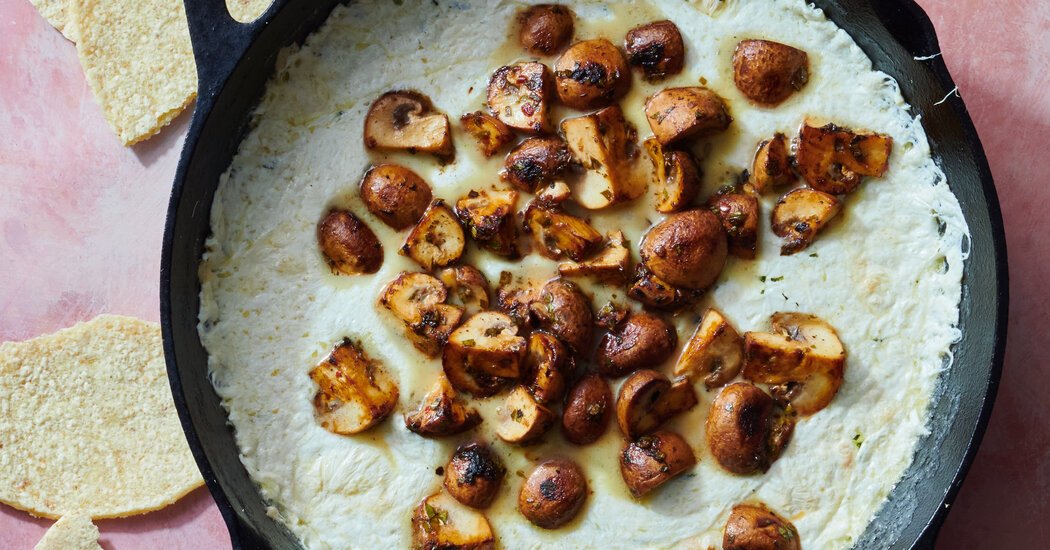Sofia Head grew up watching her grandfather lead the carne asadas, her family cookouts, in Monterrey, Mexico. He manned a charcoal grill for hours, cooking carne asada for dozens of relatives. One of her favorite dishes was his queso fundido: melted Chihuahua cheese in a cast-iron skillet that he left on his grill until the queso’s edges became crisp and the center was bubbly.
“We couldn’t have a carne asada without the queso fundido,” said Mrs. Head, who holds smaller carne asadas at her home in Fort Worth, where she’ll occasionally make the side dish with diced jalapeños and chorizo.
Queso fundido is a popular appetizer at many Mexican and Tex-Mex restaurants in the United States. The gooey cheese is served in its cast-iron skillet with tortillas or chips. Its roots go back to the Mexican Revolution, which began in 1910, said Carlos Yescas, who studies and writes about Mexican cheese. The revolutionaries gathered in the central part of the country, near Mexico City, where they made easy meals like queso fundido.
Their travels throughout the country, aided by Mexico’s train system, helped spread queso fundido to northern Mexico and South Texas, where today it is normally served with chorizo on top and a red chile salsa and corn tortillas on the side, Mr. Yescas said.
In the early 20th century, revolutionaries made the queso fundio with adobera, a white cheese similar to mozzarella that was typically made in central Mexico. Similar cheeses — like quesillo (also known as Oaxacan cheese) in the south, and Chihuahua or Monterey Jack in the north — were also used later as the dish spread across the country.
The dish’s ubiquitous serving style, in cast-iron skillets, also stems from this time period, when iron was used for trains and utensils.
At Guelaguetza, her family’s restaurant in Los Angeles, Bricia Lopez uses Oaxacan quesillo, a cheese she ate as a child. It’s typically served as an appetizer, with chorizo or mushrooms seasoned with the Mexican herb epazote.
She said that in Oaxaca, the epazote is commonly paired with cheese. In queso fresco there, she said that there are specks of the herb throughout.
“I’ve been having epazote and cheese my entire life,” Ms. Lopez said. “It’s herbaceous, it’s bright. It really works well with the fat content of the cheese. It’s one of those herbs that just makes sense.”
In Edinburg, Texas, near the Mexican border, Miguel Cobos’s childhood included frequent get-togethers with his extended family (as many as 75 people) for carne asadas in the United States and in Monterrey, where his father lives. The men make dishes like carne asada, tostadas, roasted goat called cabrito (on special occasions) and the queso fundido served with tortillas.
“The weekend is when we spend time with each other, and we cook together,” said Mr. Cobos, an owner of Vaquero Taquero, a Mexican restaurant with two locations in Austin, Texas. “And carne asadas are the go-to activity.”
Queso fundido is just one element of a great carne asada — along with very cold beer and sometimes wine, said Adrian Herrera, a Mexican chef and judge on “MasterChef Mexico” who lives in Monterrey.
“Carne asada is a lifestyle,” he said.

